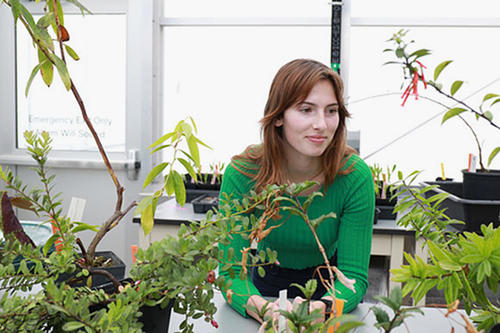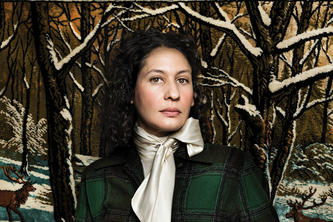
After 145 million years on the planet, flowering plants have evolved some pretty “ingenious” ways of spreading their genes around while staying firmly put.
For one thing, they and some of their pollinators have co-evolved to trade tasty nectar for a pollen pick-up service. Colorless nectars seem to be the rule, so when plants produce colored nectars it raises all sorts of questions.
That’s where Leah Hallett comes in.
The College of Biological Sciences (CBS) student has begun a study of the colored nectars that various plants use to attract their pollinators. Working in the lab of Clay Carter, a professor in the Department of Plant and Microbial Biology, she has logged countless hours in the CBS Conservatory & Botanical Collection, noting the plants that produce colored nectar.
“We’re trying to see how colored nectars influence pollinators and what kinds of interactions they have between each other,” says Hallett, “and also to determine what the pigments are in these nectars.”
“There are only 68 species known to make colored nectars, but since nectar is often overlooked as a trait, we figured that there are likely many more out there,” Carter says. “Leah found several 'new' species with colored nectars in her first hour or so of looking in the Conservatory's collection. To me, this suggests there are hundreds if not thousands of species out there with colored nectars, many of which likely have novel chemistries and associated plant-pollinator interactions.”
On the practical side, some of these nectars could become more sustainable sources of dyes for the food and textile industry.
“I found this one family—neotropical blueberries—the first day,” Hallett reported in December 2021. “Now, I have six species with colored nectar.”
And her search goes on.
This story was adapted from the College of Biological Sciences.




